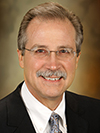Who here can draw?
 by Jed Delmore, MD —
by Jed Delmore, MD —
I’ll get back to the drawing part later. MSSC Executive Director Phillip Brownlee, MSSC President-elect Dr. Michael Lievens and I just returned from the AMA National Advocacy Conference in Washington, D.C. In addition to formal educational sessions by the AMA, we visited Kansas’ senators and representatives.
We joined forces with Kansas Medical Society President Dr. Rob Gibbs, President-elect Dr. LaDona Schmidt, Gleason Scholar Dr. Jen McKenney, Executive Director Jon Rosell, and Director of Professional Services Nancy Sullivan. We met with Sen. Jerry Moran and Reps. Lynn Jenkins, Ron Estes, Roger Marshal, and Kevin Yoder. We also met with Sen. Pat Roberts’ legislative aide on health policy.
We told all the elected officials that we appreciated their efforts representing Kansans, and their work to pass the recent budget bill. As would be imagined, no one was overly satisfied with the end result.
The bill did provide continued funding for the CHIP (Child Health Insurance Program) and changed or delayed some of the CMS MIPS (Merit-based Incentive Program System) requirements and provided additional funding for Teaching Health Center Graduate Medical Education. The Bipartisan Budget Act of 2018 also removed a requirement making Meaningful Use standards more stringent over time.
Our elected officials and their staff were attentive and seemed genuinely interested in our input and description of the struggles of providing medical care in Kansas. As a combined group, we discussed the Kansas perspective on opioid misuse, and mentioned the recently established joint KMS and Kansas Hospital Association task force on opioids. Other topics included the worsening strain of regulatory requirements and pre-certification processes that interfere with patient care, and the need for increased graduate medical education funding to continue to provide high-quality physicians for Kansas.
Now, back to the question about drawing.
The keynote speaker to start the conference was Erik Wahl, a motivational speaker, artist, entrepreneur, author and TED speaker. He presented a multimedia talk regarding disruption as the new normal and the need to focus on creativity in our careers and ourselves as individuals.
One aspect of his talk struck me as the most obvious change that has occurred in me and most of my friends and colleagues. Following a two-handed speed painting of Abraham Lincoln, he asked: “Who here can draw?” In a room of more than 500 physicians and health professionals, not a single hand was raised.
Wahl was not surprised, as that was the usual response, or lack of, to that question when posed to a room of professionals. He explained that less that 10 percent of high school seniors would raise their hands. Then he asked the audience what percentage of kindergartners would raise their hands when asked. The entire room responded 100 percent.
The point being that, over time, many or most of us tend to lose our creativity in an effort fit a specific expectation. To keep moving forward, we need to maintain the specificity of medicine while rekindling the creativity we seem to have lost since childhood.
It may be time for art paper and a 10-pack of colored pencils.


